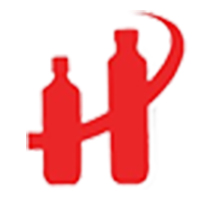In an extremely competitive market today, packaging effectiveness is no longer a necessity; instead, it complements the success of a product. Best Packaging refers to a collection of features including durability, functionality, and attractiveness, to ensure the protection of a product as well as its appeal to the consumers. Noting the essential technical specifications and best practices is very important for companies striving to enhance their packaging skill sets to meet consumer expectations.
This blog will share the secrets of achieving the Best Packaging by examining essential elements such as materials, design considerations, and sustainability factors. By analyzing these variables, the forward-looking guide provides insights into widely accepted beginning standards for packaging, yet practical considerations are included for any company looking to frame an enhanced packaging strategy. Whether yours is a startup or an already established brand, internalizing the in's and out's of successful packaging will go a long way in the realization of successful product presentation plans that are sustainable.

The most important aspect of product presentation is its packaging, which attracts consumers and conveys brand values. The latest report states that by 2024, the global transparent packaging market is estimated to attain a value of $84.2 billion, with a growth rate of 6.1% being expected from 2025 to 2034. The upsurge shows the rising demand for packaging, which does not only serve to protect the products but influences consumer decision-making at the purchasing stage through heightened visibility. Moreover, packaging excess has almost turned into a major problem, which is supported by the last government notice concerning combating excessive packaging practices. This notice directs that packaging ought to fulfill the basic requirements of protection, display, storage, and transportation in a non-excessive manner. Now, firms are being urged to adopt sustainable practices by employing innovative materials that minimize waste, keep in view consumer preferences for eco-friendly products, and maintain conformity to regulatory guidelines. Likewise, with the upsurge of e-commerce, unboxing experiences are becoming, in themselves, an important determinant of customer satisfaction and brand loyalty. Attractive packaging designs can amplify the unboxing experience, making them memorable and shareable over social media platforms. Marketers need to also delve into how their packaging sells its own story and becomes part of the customer's experience, creating an intense emotional bond with the brand. Further, technology integration, via QR codes or RFID labels, can aid in enhancing product traceability and engage consumers even more.

Knowing significant technical properties is important for getting a package considered to withstand the rigors of the product and be visually appealing. One critical specification is that of the materials used for packaging. Compostable materials are reportedly being used with a 25% increase over the past year as consumers are becoming more environmentally concerned. This is not only promoting sustainable development but is also changing the brand image. This has therefore made eco-friendly packaging a choice area where manufacturers have to keep their focus if they want to win over today's consumers.
Another parameter to examine will be the size and weight of the packaging. According to a report from the Packaging Machinery Manufacturers Institute (PMMI), these products packaged in lesser, lighter formats are better off financially than those in larger, heavier packages since they save an average of 20% on shipping and increase space efficiency on shelf. This is particularly important in the competitive arena of consumer electronics and wearables since brands are looking at every opportunity to streamline logistics while maintaining a strong presence on the retail shelf.
Coupled with packaging design, certain specifications also need to be compatible with different retail environments. The packaging of products such as smartwatches and media devices must not only serve to properly point out the product but should also be able to protect it against damage while in transport. Good design, such as utilizing protective inserts and window cut-outs, will help to better engage the consumer while lowering return rates from damages. Keeping track of these specifications will be essential as the market seeks through more and more competing environments for success.

Over the years, the packaging industry has been embracing huge moves with alignment toward sustainability and selection of materials. As indicated by the market reports, a polyethylene thermal package market will be valued at $104 billion in 2024, reflecting a projected compound annual growth rate of over 4.8 percent from 2025 to 2034. This expansion is inspired largely by the demands by consumers to make the predominance of their packaging lightweight, low-cost and environmental-friendly.
Moreover, the plastic packaging for food and beverages is anticipated to reach an impressive $222.1 billion in 2024 with a CAGR of more than 4.7 percent during the 2034 forecast period. Increased convenience for ready-to-eat food packaging drives fresh creativity among manufacturers with sustainable material alternatives. Growth trends of more than 5.1 percent indicate a furtheruntapped market entry with increasing demands for eco-friendly packaging: glass and aluminum container packaging.
The most important practice today is using recycled content and wise designs as companies continuously fight against sustainability goals. Phasing out conventional plastic packaging in favor of more environmentally friendly alternatives is a key factor in the reduction of environmental footprint. The transition to biodegradable as well as eco-friendly packaging is the subject of research report that informs the industry of movements towards sustainability in reaction to consumer action and regulatory pressure.

Innovative designs are playing an important part in packaging function enhancement in the market nowadays. As it shows from the Smithers Pira, by 2024, the global packaging market is going to extend over USD 1 trillion, thus indicating that organizations are provisioned upon efficient and effective packaging solutions. Packaging is much more than aesthetics for companies these days.
Widespread use of smart packaging elements is one of the promising solutions. Technologies like QR code and NFC tags enable consumers with a function such as enriched user engagement through provision detailed product information. According to Research and Markets, smart packaging segment is expected-only during 2021-2026-to experience a CAGR rate of 6.2%. It is a window of opportunity for brands to speak necessary product information further enriched in the customer experience via interaction design.
Sustainable materials are another modern method of innovating. With 66 pocent of consumers willing to pay more for green products, as in a Nielsen survey, companies need to seek out biodegradable and recyclable materials as their packaging identities. The adoption of sustainable packaging will address market consumers" needs as well as contribute to environmental preservation in such a way. Modern-day commercialism will apply the same duality of innovation and sustainability to better function its packaging.
Packaging has become ever more important in the rapid industrialization of this sector, especially in pharmaceuticals, wherein compliance has become ever more paramount. The requirements for biologics and proprietary drugs are more stringent, with each safety criterion specifically defined by different global health standards needing to be met. It is now therefore of utmost importance that the entire package system goes through all applicable and regulatory requirements so that it performs effectively in protecting the product. Such systems, therefore, require materials and technologies capable of fulfilling all safety and labeling requirements.
Recent trends suggest a very healthy growth pattern in the pharmaceutical packaging market, which is projected to hit an unbelievable $151.5 billion by 2024 and with a compound annual growth rate (CAGR) in excess of 15.6% through 2034. Most of this growth comes on the back of increased regulatory scrutiny and consumers demanding greater transparency and safety in their medications. A seemingly insurmountable challenge to manufacturers is now understanding regional regulations, international shipping standards, and everything in between to ensure their product is not only compliant but also market-ready.
Real-time disruption of logistics and e-commerce comes with the impact of these emerging technologies. For example, the rise of autonomous delivery robots comes with its own implications. These technologies help modernize the workplace, obtaining productivity increases in the process. However, they also add new levels of complexity into regulation concerning the readiness for packaging and safety during transportation. Placing compliance and safety practices will provide the packaging industry the armor needed to confront the challenges ahead while keeping consumer confidence and product integrity intact.
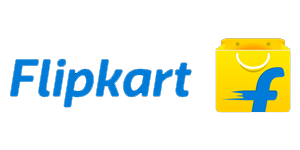
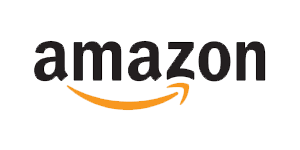
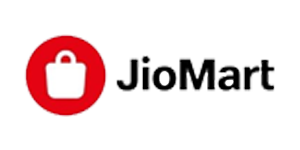
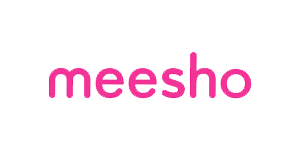
Copyright 2023 Harsh impex, All rights reserved | Designed by LNSEL
